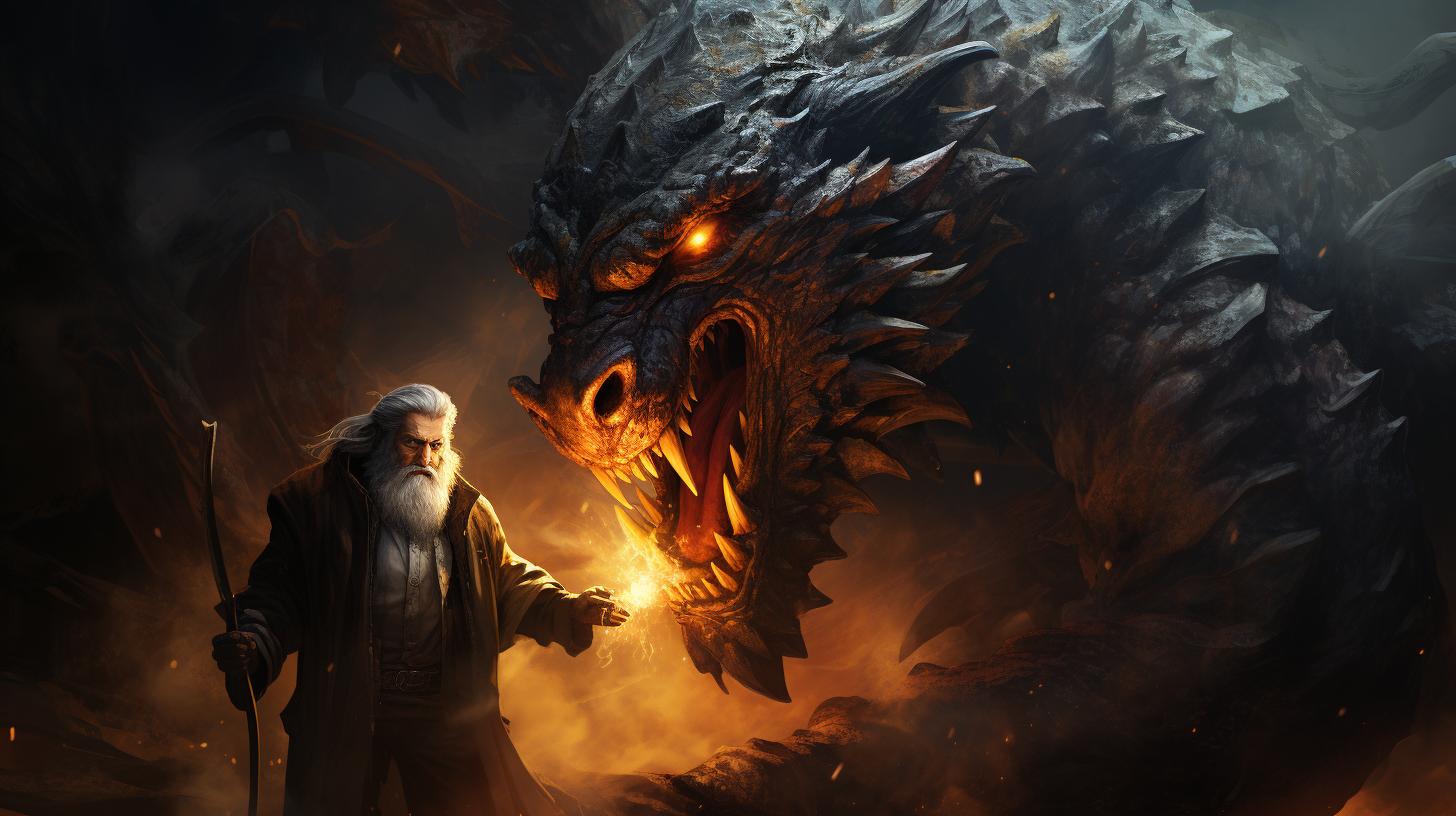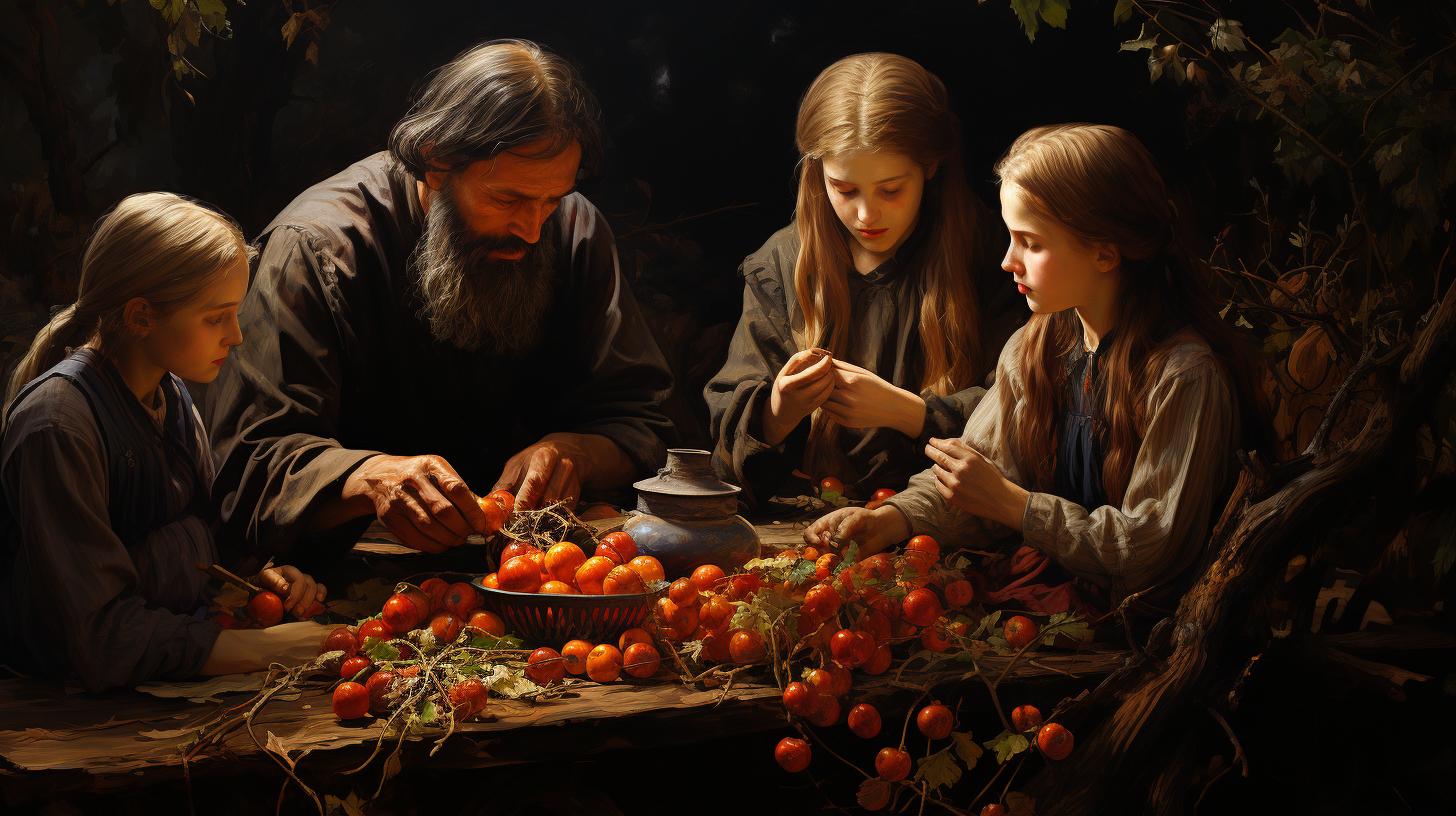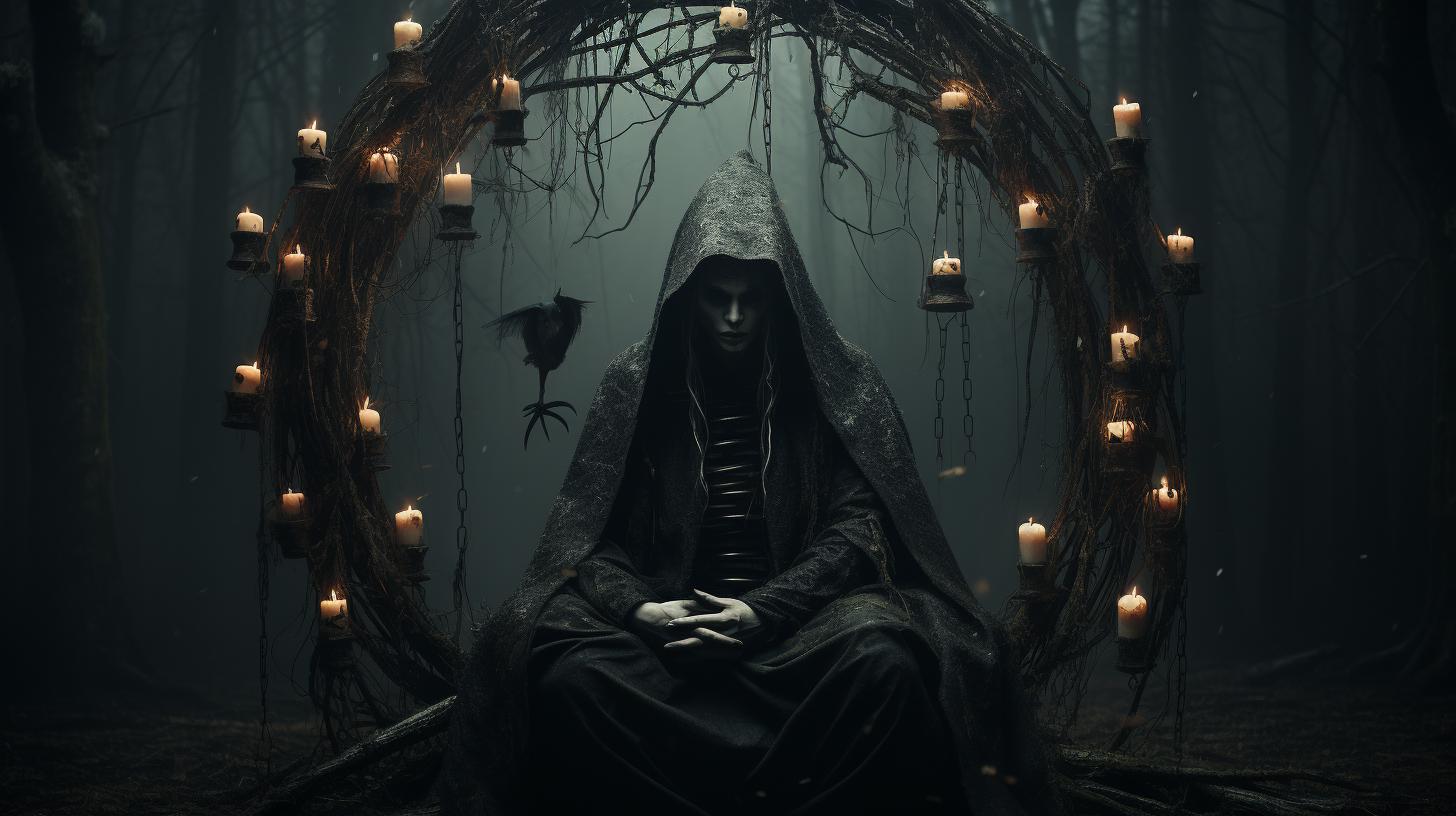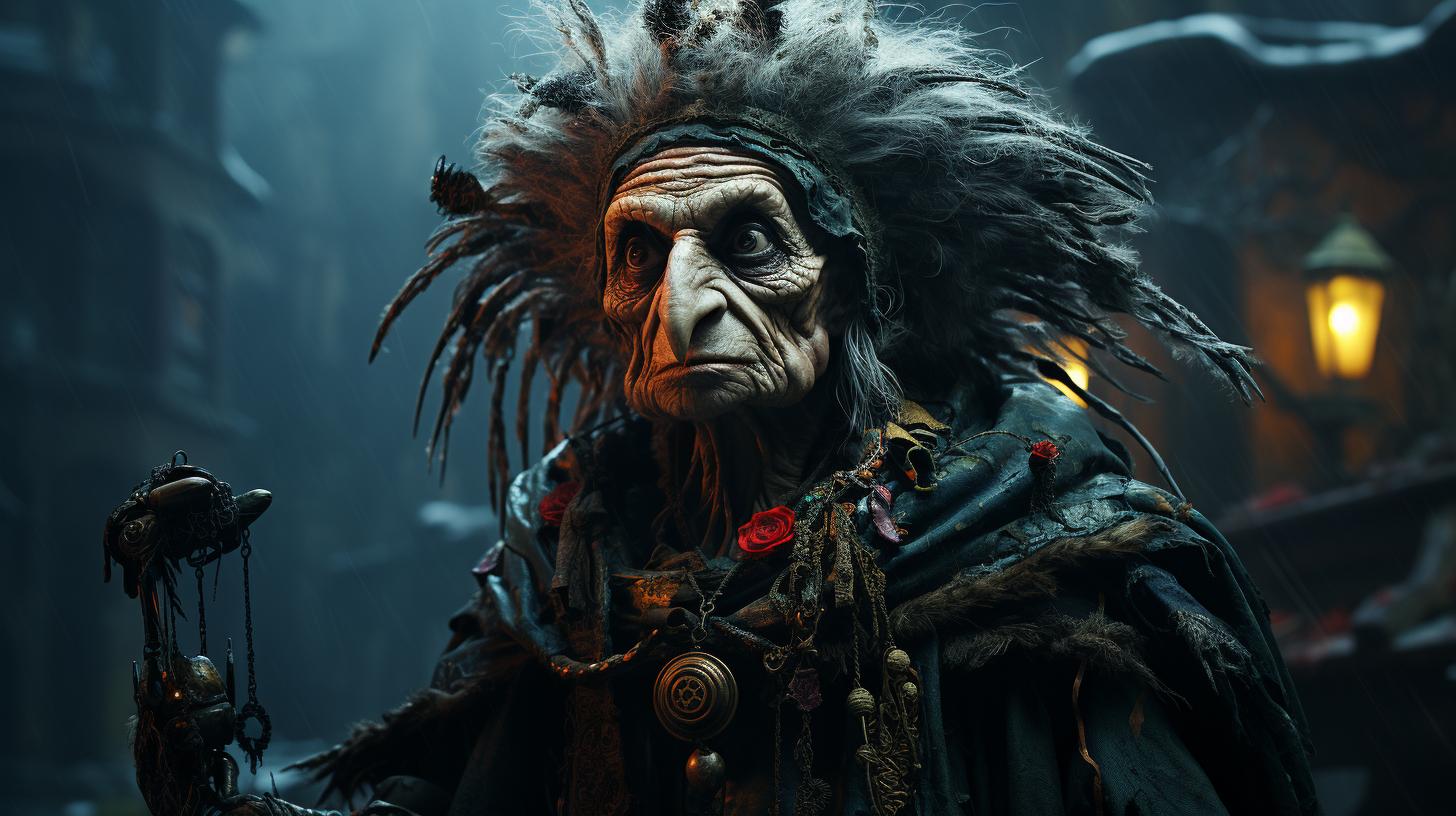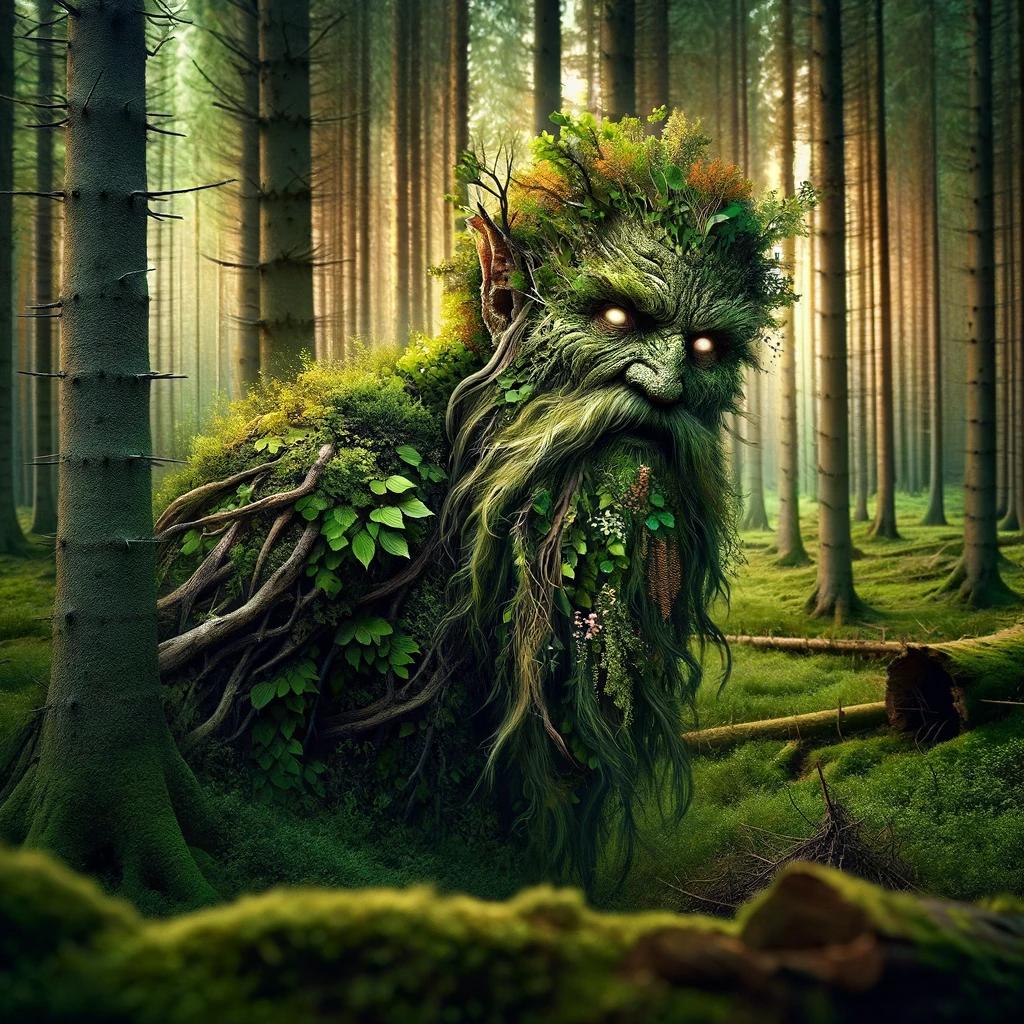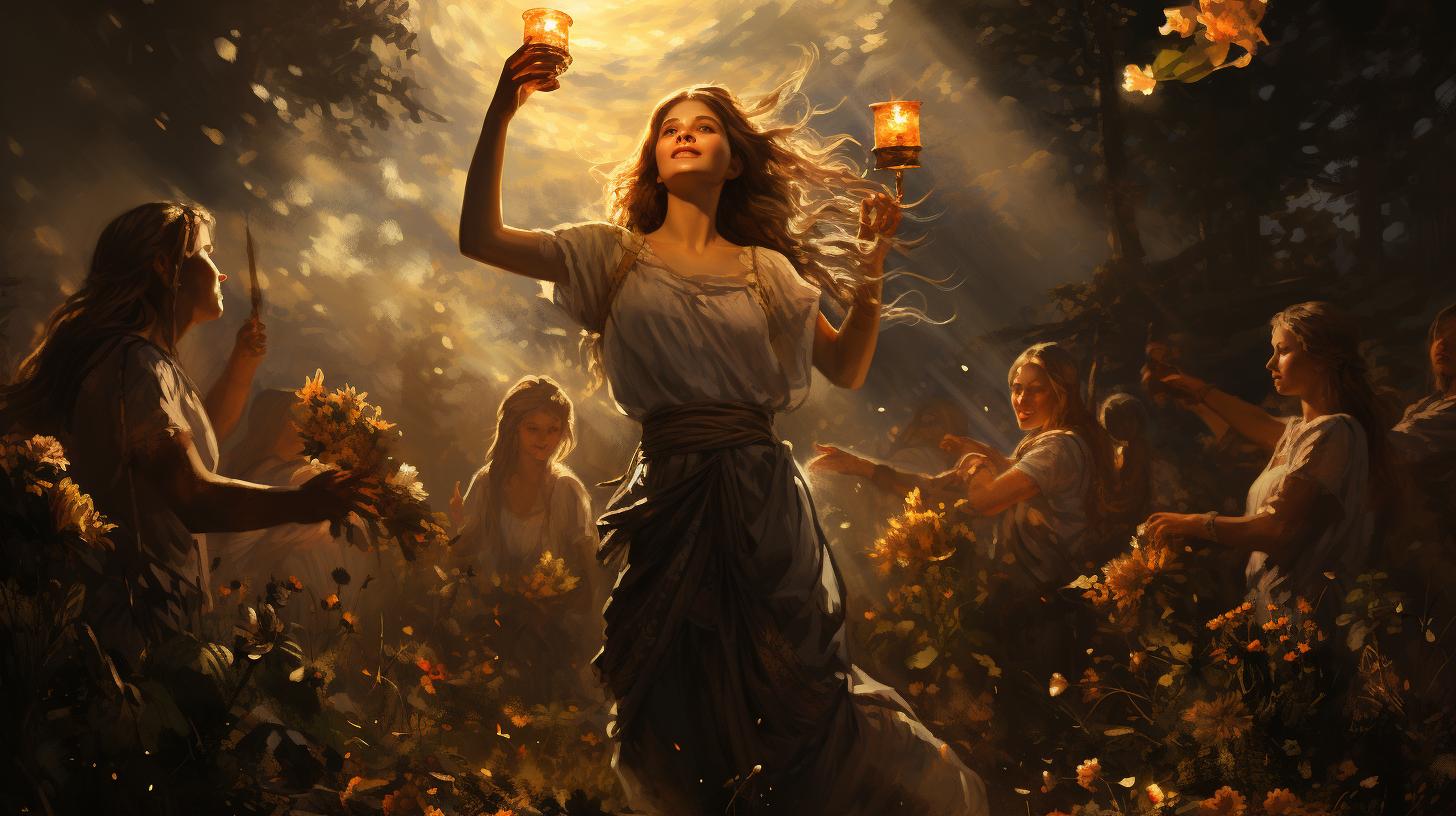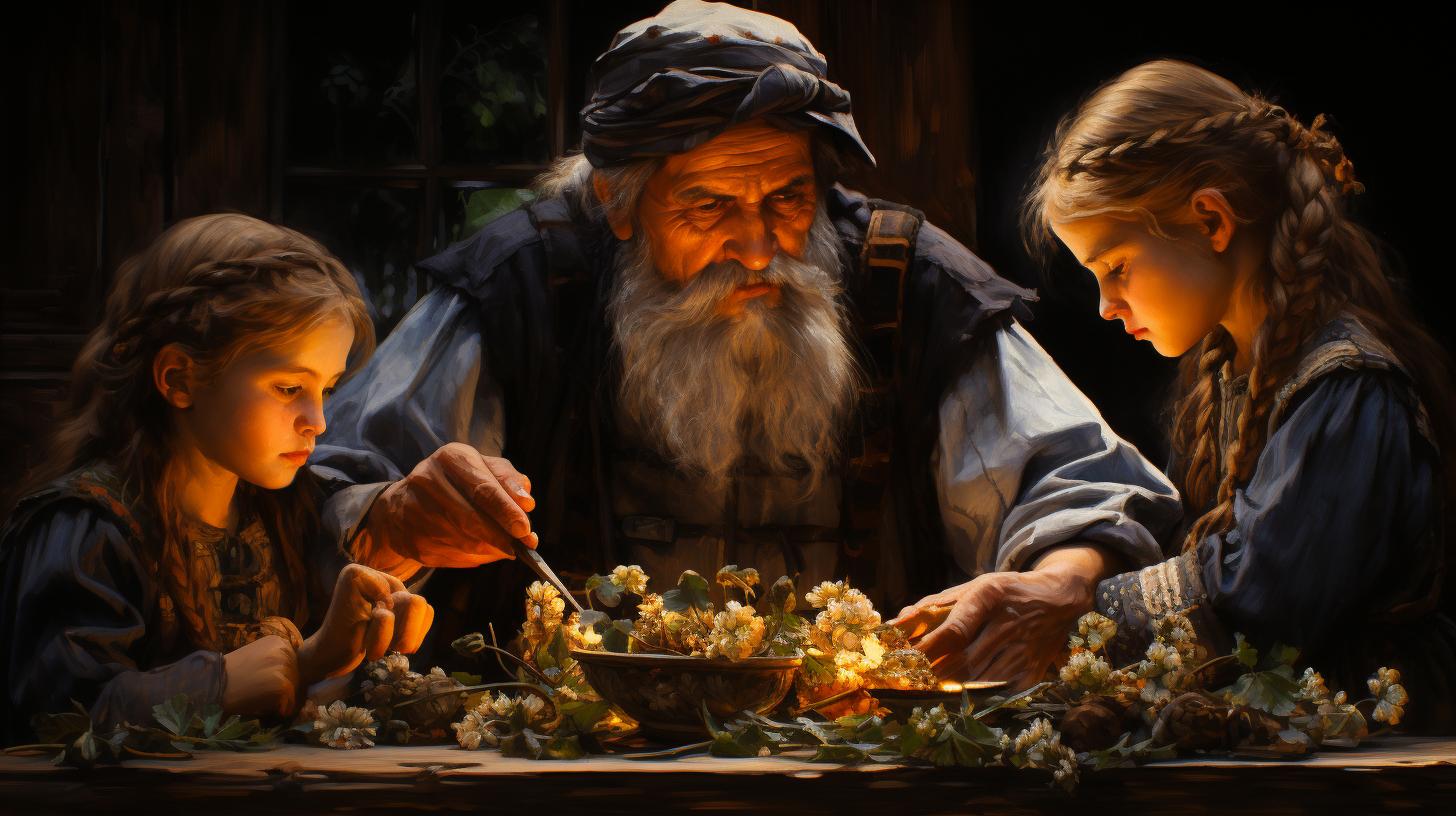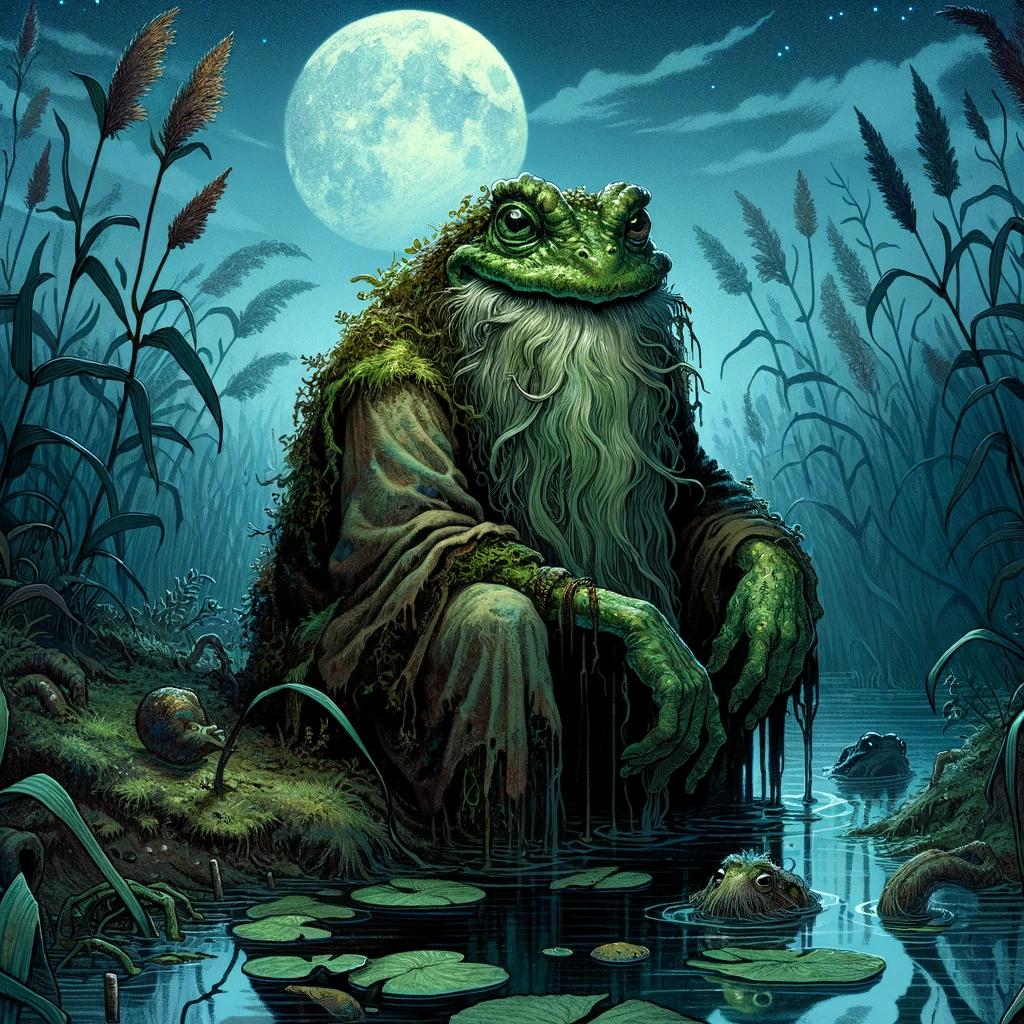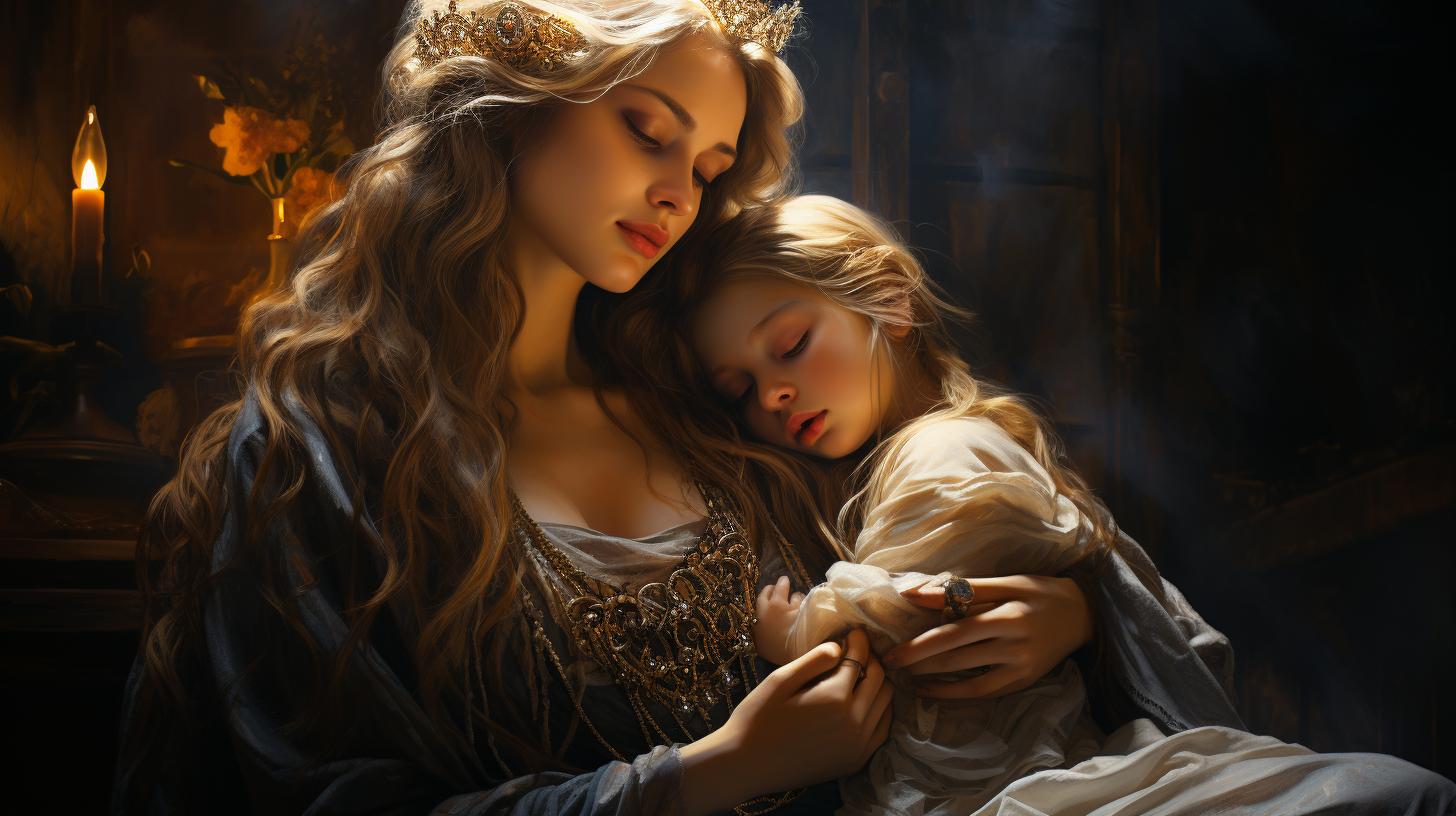Zirnitra Mythology: Unveiling the Enigmatic Dragon Deity of Wendish Folklore
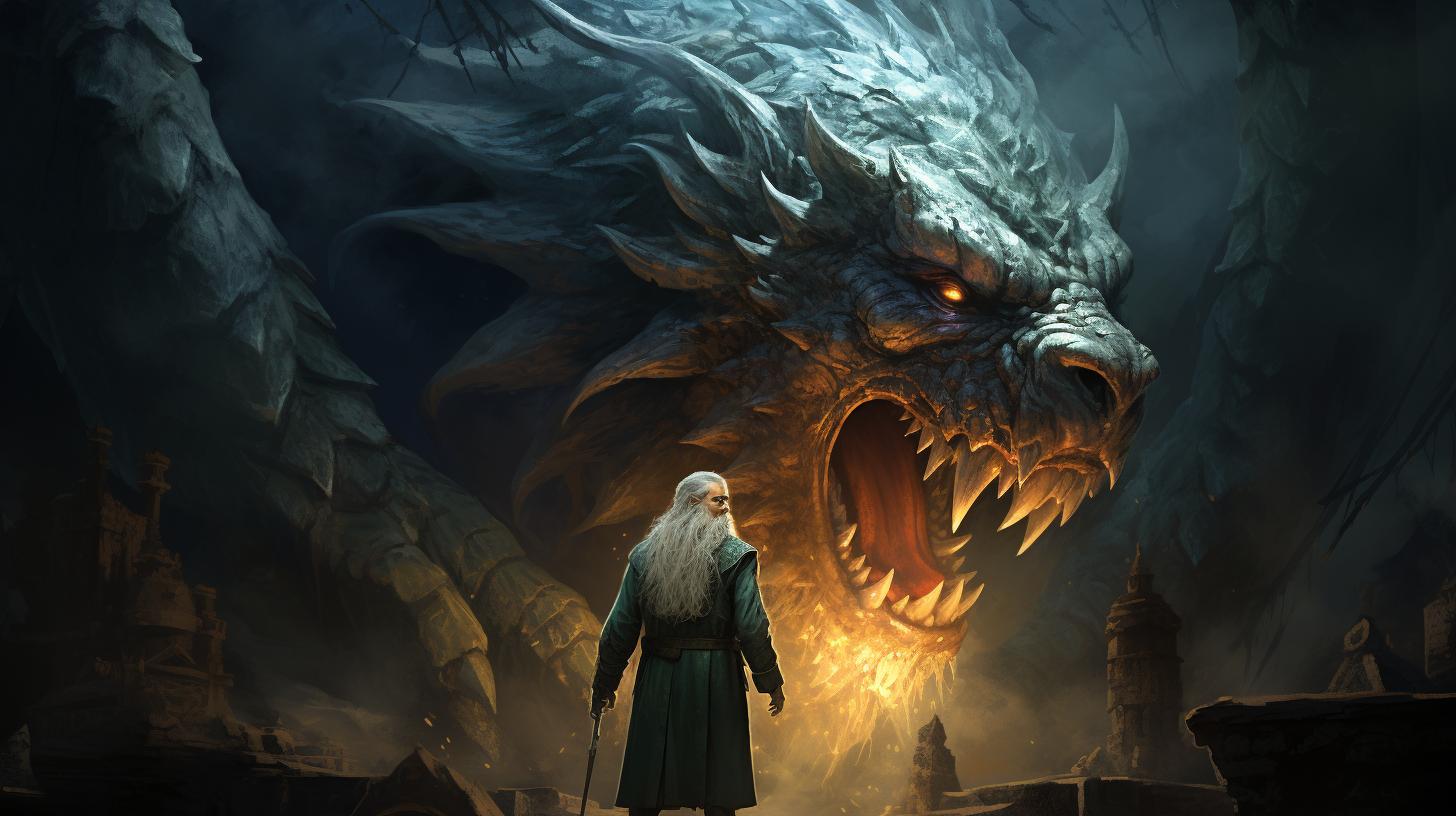
Zirnitra mythology is an intriguing aspect of Slavic folklore, particularly in Wendish culture. This mythical dragon deity, also known as Zir or Rosvodiz, represents the god of sorcery, and its image was used as a symbol of resistance during the Wendish-Saxon conflict.
Slavic mythology is rich with various dragon figures, such as Zmey Gorynych, Tugarin Zmeyevich, and Chudo-Yudo, each with distinct characteristics and roles. These dragons are believed to have connections to weather, water, and even human relationships.
Zirnitra mythology has also found its way into popular culture, appearing in books, films, and video games, perpetuating its enigmatic allure.
Zirnitra: The Black Slavic Dragon Deity
In Slavic mythology, Zirnitra is a significant figure known as the Black Dragon Deity. This majestic creature, also referred to as Zir or Rosvodiz, holds great importance in Wendish culture.
Zirnitra represents the god of sorcery and has been revered as a symbol of resistance during the Wendish-Saxon conflict.
As a dragon deity, Zirnitra is part of a diverse tradition of dragons within Slavic mythology. This rich folklore encompasses various countries such as Russia, Ukraine, Bulgaria, Slovakia, and more.
Zirnitra’s portrayal as a black dragon distinguishes it from other mythical dragons, highlighting its unique attributes and symbolism.
The significance of Zirnitra extends beyond its appearance. As the god of sorcery, Zirnitra embodies the mystical aspects of Slavic mythology. It represents the power and wisdom associated with magic, making it a revered entity in Wendish culture.
The image of Zirnitra was even utilized on a flag as a symbol of resistance during the Wends’ struggle against Saxon invaders.
Zirnitra’s representation as a black draconic entity further emphasizes its enigmatic nature. In Slavic folklore, dragons often have various roles and characteristics. While some dragons are portrayed as antagonistic figures in Russian literature, Balcanic dragons are often considered more benevolent in comparison to their malevolent counterparts.
Zirnitra’s mythology showcases its connection with weather and water, as seen in Slovak folklore. The dragon is believed to possess the ability to control the climate and act as a source of water.
Such associations highlight Zirnitra’s elemental powers, further emphasizing its divine nature within Slavic mythology.
With its captivating presence, Zirnitra has found its way into popular culture, appearing in various mediums such as books, movies, and video games. Its mesmerizing attributes and role as a prominent figure in Slavic mythology continue to captivate audiences, allowing the legend of Zirnitra to live on in modern storytelling.
Zmey Gorynych: A Multi-Headed Dragon in Russian and Ukrainian Legends
One of the captivating dragons in Slavic mythology is Zmey Gorynych, a creature that prominently appears in Russian and Ukrainian legends. This fearsome dragon is known for its unique feature of having multiple heads, often depicted as three heads or even more.
Each head possesses its own personality and distinct traits, making Zmey Gorynych a formidable and complex mythical creature.
Zmey Gorynych’s reputation as a menacing adversary is well-founded in Slavic folklore.
It is said to breathe fiery breath and possess incredible strength, posing a significant threat to heroes and villagers alike. Stories of epic battles between Zmey Gorynych and brave warriors have captivated the imaginations of generations.
Interestingly, the symbolism behind Zmey Gorynych extends beyond its physical attributes. Each head of this multi-headed dragon is said to represent different elements, such as fire, water, and earth, symbolizing the dragon’s mastery over these natural forces.
This further enhances the dragon’s mystique and importance in Slavic mythology.
Legends also speak of the magical powers and treasures guarded by Zmey Gorynych. According to tales, conquering this fearsome dragon would grant the victor access to immense wealth and untold wisdom.
It is these enticing rewards that drive heroes to face the formidable Zmey Gorynych in daring quests.
Throughout Russian and Ukrainian folklore, Zmey Gorynych’s tales serve as cautionary stories, emphasizing the significance of courage, wit, and resourcefulness in overcoming challenges.
The multi-headed dragon remains an iconic symbol of power, danger, and the inherent struggles that heroes must face.
The enduring presence of Zmey Gorynych in Russian and Ukrainian culture is a testament to the lasting impact of Slavic mythology.
Its captivating tales continue to inspire art, literature, and various forms of entertainment, keeping the legend of this multi-headed dragon alive for future generations to appreciate and enjoy.
Zmei Dragon: Variations and Roles in Slavic Mythology
In Slavic mythology, the Zmei dragon is a captivating figure that appears in various folklore across different Slavic countries.
This dragon is often depicted as a formidable creature with immense power and a serpentine body. The Zmei dragon is known for its multiple heads, ranging from three to nine, each representing a unique aspect or power.
One of the most famous variations of the Zmei dragon is the Zmey Gorynych, which exists in Russian and Ukrainian legends. This multi-headed dragon is often portrayed as an antagonist, wreaking havoc and creating chaos in its path.
It serves as a daunting challenge for heroes and warriors brave enough to confront it.
Another variation of the Zmei dragon is the Chudo-Yudo, a creature with multiple heads that appears in Slavic fairy tales.
In some tales, it is depicted as the sibling of Koshchey the Immortal or even as a manifestation of the witch Baba Yaga. The Chudo-Yudo is believed to be one of the guardians of the coveted Water of Life and Death.
Its name is invoked during times of drought, seeking its benevolent intervention.
The Zmei dragons in Slavic mythology are often associated with the elemental forces of nature, specifically with the control of weather and as sources of water.
They are believed to possess the ability to influence rain, storms, and even droughts, making them both feared and revered figures in the folklore.
In Slavic mythological narratives, Zmei dragons are known to have complex roles.
While some portray them as malevolent beings, instigating conflicts and causing destruction, others depict them as guardians or protectors, acting as a balancing force in the natural order.
The Zmei dragon’s symbolism extends beyond its physical form and actions.
It represents the inherent power of nature and the forces of the unknown, serving as a reminder of humanity’s connection to the natural world and the need for respect and harmony.
Aždaja Mythology: Serpent-like Creatures in Slavic Folklore
Slavic folklore is rich with mythical creatures, and among them, the Aždaja holds a significant place. Aždaja refers to serpent-like creatures that feature prominently in Slavic mythology. These creatures are often portrayed as massive serpents with tremendous strength, numerous heads, and sometimes wings.
They are believed to possess immense knowledge and magical powers.
In Slavic cultures, Aždaja is associated with both fear and awe. They are seen as powerful entities that dwell in deep forests, caves, or underwater realms.
Aždaja is known to guard hidden treasures, sacred sites, and secret knowledge. Legends often depict heroes and adventurers seeking encounters with these formidable creatures, hoping to harness their powers or unlock the secrets they guard.
The tales surrounding Aždaja vary across different Slavic regions. Some stories describe them as malevolent and destructive beings, causing chaos and devastation. Others portray them as guardians of the natural world, maintaining the delicate balance between good and evil.
In some instances, Aždaja is presented as a shape-shifter, capable of assuming various forms to deceive or protect.
These serpent-like creatures in Slavic folklore not only serve as mythical beings, but they also serve as powerful metaphors.
They embody concepts of wisdom, danger, transformation, and the ever-present mystery of the unknown. The tales of Aždaja continue to captivate and intrigue, preserving ancient beliefs and cultural heritage.
Zirnitra Mythology in Wendish Culture: Resisting the Saxons
In Wendish culture, Zirnitra plays a crucial role in mythology, symbolizing the god of sorcery and offering a powerful symbol of resistance against the invading Saxons.
During the Wendish-Saxon conflict, Zirnitra’s image adorned flags, serving as a rallying point for the Wendish people.
Zirnitra, also known as Zir or Rosvodiz, represents a black dragon deity, embodying the strength and magic of the Wendish people.
This dragon figure holds significant cultural significance and is revered as a protector and symbol of independence.
Wendish folklore often portrays Zirnitra’s connection to the realm of magic and witchcraft, enhancing its mystical aura among the Wendish population.
As a creature of immense power and sorcery, Zirnitra evokes a sense of awe and respect.
Within the context of the Wendish-Saxon conflict, Zirnitra’s representation on flags served as a unifying symbol for the Wendish people, instilling courage and determination in their resistance against the invading Saxons.
The presence of Zirnitra’s image fostered a sense of identity and pride in the Wendish community amidst adversity.
Zirnitra’s mythology in Wendish culture not only reflects the deep-rooted beliefs and traditions of the Wendish people but also stands as a testament to their resilience and unwavering spirit in the face of external threats.
The Appearances and Traits of Zirnitra in Folklore and Literature
Zirnitra, the Black Slavic Dragon Deity, holds a significant place in folklore and literature, captivating audiences with its enigmatic nature. This majestic creature is often portrayed as a powerful black dragon, symbolizing the god of sorcery in Wendish mythology.
Its dark and awe-inspiring presence evokes both fear and reverence among those who encounter it.
In various folk tales and legends, Zirnitra is described as a formidable dragon, possessing immense strength and mystical abilities.
Its scales are said to be as black as the night, glistening under the moonlight, while its piercing eyes radiate a mesmerizing enchantment. The dragon’s immense size and powerful wings grant it the ability to soar through the skies with grace and agility, instilling both wonder and terror in those who witness its flight.
Legends depict Zirnitra as a guardian of ancient knowledge and secrets, with the ability to bestow magical powers upon those who prove themselves worthy. It is often associated with hidden treasures and forbidden wisdom, making it a subject of fascination for adventurers and seekers of mystical realms.
Zirnitra’s appearance in literature further enhances its mystique. Writers and storytellers have depicted this legendary dragon in various forms, sometimes as a fearsome antagonist, representing the eternal struggle between good and evil.
At other times, Zirnitra takes on a more benevolent role, guiding and protecting heroes on their quests.
Among the interesting traits associated with Zirnitra is its unique ability to shape-shift. In some tales, this dragon deity assumes human forms, allowing it to interact with mortals.
These encounters often result in profound and life-changing experiences, blurring the lines between the human and mythical realms.
The rich symbolism embodied by Zirnitra adds depth and intrigue to Slavic folklore and literature.
Its appearances in various forms and roles reflect the complexity of human imagination, infusing tales with elements of awe, mystery, and magic.
As we explore the world of Zirnitra and delve into its appearances and traits within folklore and literature, we unveil a captivating tapestry of legends that continue to enchant and inspire us in the present day.
Zirnitra and the Connection to Weather and Water in Slovak Mythology
In the rich tapestry of Slovak mythology, Zirnitra, the black Slavic dragon deity, is not only associated with sorcery but also holds a profound connection with weather and water. As masters of the climate, dragons are believed to have the ability to influence rain, storms, and overall weather patterns.
They are seen as guardians of water sources such as rivers, lakes, and springs.
Zirnitra, in particular, is revered as a powerful force in shaping the natural elements. This mighty dragon is believed to possess the ability to manipulate weather phenomena, from summoning rain to controlling thunder and lightning.
The presence of Zirnitra in Slovak mythology emphasizes the significance of dragons as divine entities intricately linked to the celestial forces that govern our world.
Furthermore, Zirnitra’s close association with water is deeply entrenched in the mythology.
It is believed that dragons are not only physical beings but also spiritual entities that can change their forms, enabling them to dwell in watery realms. They are seen as protectors and providers of water, ensuring its abundance and accessibility to humans and other creatures.
In Slovak folklore, there are tales of Zirnitra emerging from bodies of water, revealing their majestic presence to those who encounter them. These encounters often come with blessings of prosperity, fertility, and bountiful harvests, as water holds great significance in agricultural societies.
Legend has it that dragons like Zirnitra have the power to create or cease rainfall, influencing agricultural cycles and ensuring the well-being of communities. They are seen as benevolent beings that bestow their blessings upon those who respect and honor their connection to nature.
As the dragon deity of sorcery, Zirnitra’s control over weather and water serves as a symbol of their mystical and elemental prowess. They represent the intricate balance between the natural world and human existence, highlighting the profound interdependence between humans and the forces of nature.
Thus, in Slovak mythology, the portrayal of Zirnitra as a dragon deity with a remarkable connection to weather and water reflects the deep reverence and respect that the Slavic people have for the natural elements and their understanding of the crucial role they play in sustaining life.
Legends of Love and Transformation: Zirnitra’s Relationships with Humans
In the captivating realm of Zirnitra mythology, one aspect that intrigues many is the extraordinary relationships between Zirnitra, the black Slavic dragon deity, and humans. These legends depict Zirnitra’s ability to assume both male and female forms, captivating the hearts of mortals.
According to ancient Slavic tales, Zirnitra would often cross paths with humans, forming deep connections that defied the boundaries between different worlds. It is said that Zirnitra’s allure was so potent that humans were unable to resist its enchanting presence.
In these tales of love and transformation, mortals who encountered Zirnitra were not only captivated by its beauty but also found themselves irrevocably changed by the encounter. Zirnitra’s influence brought about astonishing transformations, both physical and emotional, altering the course of their lives forever.
These legends highlight the profound impact that Zirnitra had on the lives of those it encountered. Many stories speak of individuals who were granted extraordinary powers or bestowed with immense knowledge after forming a bond with this enigmatic dragon deity.
Others found their hearts consumed by a love unlike anything they had ever experienced before.
It is important to note that these relationships were not always without consequences. While some mortals thrived under Zirnitra’s influence, others faced challenges and sacrifices as they navigated the complexities of their newfound connections.
Zirnitra’s love was as intense as it was transformative, and individuals were tested in ways they had never imagined.
These tales of love and transformation serve as a testament to the power and allure of Zirnitra in Slavic mythology.
The impact of these encounters exemplifies the intricate relationship between humans and the divine, blurring the lines between mortal existence and the realm of the mythical.
Etymology of Slavic Dragon Terminology and Its Relation to Earth
The terminology associated with Slavic dragons in mythology carries a rich history and reveals interesting connections to the natural world.
The etymology of these dragon-related terms can be traced back to the Proto-Slavic word *zmьjь, which signifies a serpent-like creature. In Slavic folklore, dragons are often depicted as powerful beings associated with the earth and its elements.
Within the incantation folk songs, the significance of the connection between snakes and the earth is particularly emphasized. This connection highlights the belief in the dragons’ close ties to the land, their role as protectors, and their association with life and fertility.
The dragons are regarded as masters of climate, bringing rain and providing a source of water for the people.
The dragonesque creatures in Slavic mythology represent a diverse range of characteristics and roles across different regions.
From the multi-headed Zmey Gorynych in Russian and Ukrainian legends to the dragon-like Aždaja creatures portrayed in Slavic folklore, each dragon figure has its unique attributes and place within the mythological framework.
- The Slavic dragon terminology reflects the enchanting qualities and diversity of these creatures:
- Zmei Dragon: Known as Zmey or Zmiy in Russian and Zmiy in Ukrainian, this type of dragon frequently appears as an antagonist in Russian literature.
However, in the Balkans, Zmei dragons are often portrayed more benevolently compared to other malevolent dragons.
The connection between dragons and the natural world is further exemplified by the belief that dragons can transform from serpents and that they possess the ability to take on romantic relationships with humans in both their male and female forms.
This etymological exploration helps us understand the cultural significance of Slavic dragon mythology and its deep-rooted connection to the earth and its elements.
Other Dragons of Slavic Mythology: Tugarin Zmeyevich and Chudo-Yudo
Slavic mythology is rich with captivating dragon figures, and two notable ones are Tugarin Zmeyevich and Chudo-Yudo.
These legendary creatures hold their own unique place in the tapestry of Slavic folklore, each with its own distinct traits and stories.
Tugarin Zmeyevich
Tugarin Zmeyevich is a fearsome dragon depicted in Russian heroic literature. He is often portrayed as a human-like dragon, displaying immense strength and cunning. Tugarin Zmeyevich is known for his antagonistic role, engaging in battles with brave heroes.
His presence represents the embodiment of evil forces, challenging the heroes in their quests.
Chudo-Yudo
Chudo-Yudo is another mesmerizing dragon that appears in Slavic fairy tales. This multi-headed creature is often associated with the legendary witch Baba Yaga and is believed to be her brother.
Chudo-Yudo serves as one of the guardians of the Water of Life and Death, playing a significant role in Slavic folklore rituals during times of drought. Its ability to transform and regenerate its decapitated heads adds to its mystique.
- Tugarin Zmeyevich is a fearsome dragon depicted in Russian heroic literature
- Chudo-Yudo is associated with the legendary witch Baba Yaga and serves as one of the guardians of the Water of Life and Death
These dragons, Tugarin Zmeyevich and Chudo-Yudo, provide further depth and enchantment to the rich tapestry of Slavic mythology, inviting us into a world of heroic battles against evil forces and mystical connections with the elements.
Exploring their legends and personas allows us to immerse ourselves in the captivating realm of dragons that have captivated Slavic cultures for centuries.
Zirnitra Mythology in Popular Culture: Books, Films, and Video Games
The mystical and captivating world of Zirnitra mythology has made its mark in popular culture, leaving an imprint on various forms of entertainment.
From books and films to video games, the enchanting tales of Zirnitra have become a source of inspiration for creative minds. Let’s explore how this intriguing dragon deity has found its way into the realms of popular culture.
Books
Zirnitra mythology has been beautifully brought to life through the pages of countless books. Authors have delved into the rich tapestry of Slavic folklore, crafting immersive tales that capture the imagination of readers.
These books take us on thrilling adventures, unraveling the mysteries surrounding Zirnitra and its mystical realm. Whether it’s epic fantasy novels or mythological retellings, the presence of Zirnitra adds a touch of magic to the literary world.
Films
The allure of Zirnitra mythology has also graced the silver screen, captivating audiences with its visual splendor. Directors and filmmakers have drawn inspiration from the ancient tales, translating them into awe-inspiring cinematic experiences.
Through breathtaking special effects and captivating storytelling, these films bring the majestic dragons and enchanting world of Zirnitra to life. From epic adventures to animated fantasies, Zirnitra’s presence leaves an indelible mark on the film industry.
Video Games
In the realm of interactive entertainment, Zirnitra mythology has found its way into the immersive world of video games. Game developers have harnessed the power of this ancient folklore, incorporating Zirnitra and its mythical counterparts into virtual landscapes.
Players embark on heroic quests, battling formidable dragons and unraveling the secrets of Zirnitra’s domain. These games not only provide thrilling gameplay but also allow players to immerse themselves in the rich tapestry of Slavic mythology.
From books that transport us to magical worlds, films that mesmerize us with stunning visuals, to video games that let us become part of the adventure, Zirnitra mythology continues to captivate and inspire.
Its presence in popular culture serves as a testament to the enduring power of ancient legends and the timeless appeal of dragons.
.











